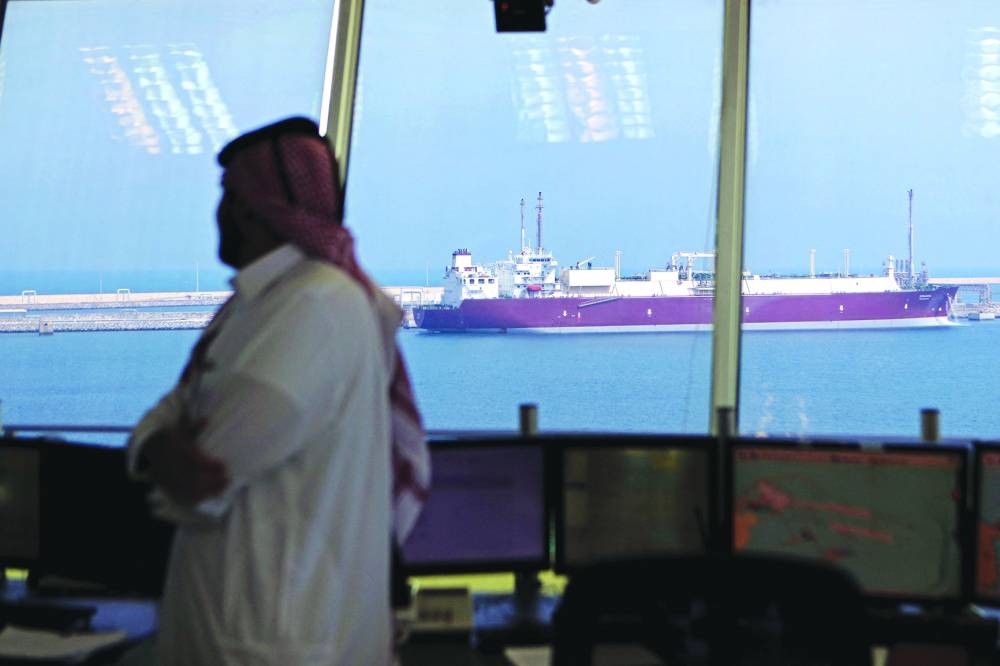Qatar, a low-cost supplier of liquefied natural gas (LNG), will remain in a relatively strong competitive position even after 2030, according to Standard & Poor's (S&P), a global credit rating agency.
Higher gas production related to the North Field Expansion or NFE, expected to come on stream from end-2025, should increase Qatar’s government revenue, it said, adding high oil prices and rising hydrocarbon production will support strong fiscal and external balances over 2023-26.
Highlighting that the demand for LNG is likely to peak in the mid-2030s, it said the "stable" outlook reflects its view that Qatar's fiscal and external buffers should continue to benefit from the country's status as one of the world's largest exporters of LNG over the next two years, further boosted once production increases through the NFE over 2025-27.
Expecting Qatar to remain one of the largest exporters of LNG globally, S&P said between 2025 and 2027, the government plans to increase Qatar’s LNG production capacity by 64%, to 126mn tonnes per year (mtpy) from 77 mtpy currently.
"The strategic pivot away from Russian gas, particularly by European economies, suggests there will be demand for additional exports from Qatar. In our forecast, we assume that actual LNG production will be largely flat until 2025 but increase about 30% over 2026-27. We expect the full increase in capacity will take some time to materialise," the note said.
QatarEnergy, the state-owned hydrocarbons bellwether, is responsible for all phases of the oil and gas industry in Qatar, including the NFE. It has maintained an interest of about 75% in the increase in LNG production capacity of 49 mtpy (to 126 mtpy from 77 mtpy).
So far, QatarEnergy has signed LNG sale and purchase agreements with its joint venture partners amounting to up to 18 mtpy for terms, about 38% of the capacity increase. The contracts include those with China National Petroleum and China Petrochemical Corporation (Sinopec) for 4 mtpy each, Shell and TotalEnergies up to 3.5 mtpy each, ConocoPhillips up to 2 mtpy (this contract is for at least 15 years, the others are for 27 years), and Eni up to 1 mtpy.
The credit rating agency also noted that once the NFE project boosts LNG production after 2025, per capita income levels of the country would increase further.
Qatar's income levels remain among the highest of rated sovereigns, supporting its credit profile, it said, adding high GDP per capita, estimated at $77,200 in 2023, mitigates the effects of relatively weak trend growth, measured by the weighted average 10-year per capita real GDP growth rate.
Expecting capital spending to remain strong, with a moderation in government investment mitigated by QatarEnergy's investment in the NFE project; S&P projects government investment of about QR60bn (6% of GDP or gross domestic product) by 2026, against a peak of about QR103bn (19% of GDP) in 2016, as some major infrastructure projects have been completed.
"However, we expect QatarEnergy will invest about 8% of GDP on average per year over 2022-25. Public sector investment makes up about two-thirds of the gross capital formation in Qatar's economy," it said.
Expecting a narrowing fiscal surplus in 2023, because of the decline in the oil price to average about $82 per barrel, from about $100 in 2022, S&P said with its expectation of largely flat oil production and prices from 2023, until production begins to pick-up in 2026, the budgetary surplus is slated to remain at about 4% of GDP annually over the period.

A view of the Ras Laffan Industrial City, Qatar's principal site for the production of liquefied natural gas and gas-to-liquids. Qatar, a low-cost LNG supplier, will remain in a relatively strong competitive position even after 2030, according to Standard & Poor's.

